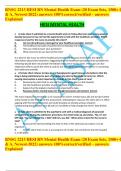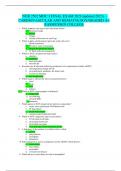Examen
Test Bank - Microbiology with Diseases by Taxonomy, 6th Edition (Bauman, 2020), Chapter 1-27 | All Chapters
Table Of Content: A Brief History of Microbiology The Chemistry of Microbiology Cell Structure and Function Microscopy, Staining, and Classification Microbial Metabolism Microbial Nutrition and Growth Microbial Genetics Recombinant DNA Technology Controlling Microbial Growth in the Environment Cont...
[Montrer plus]












